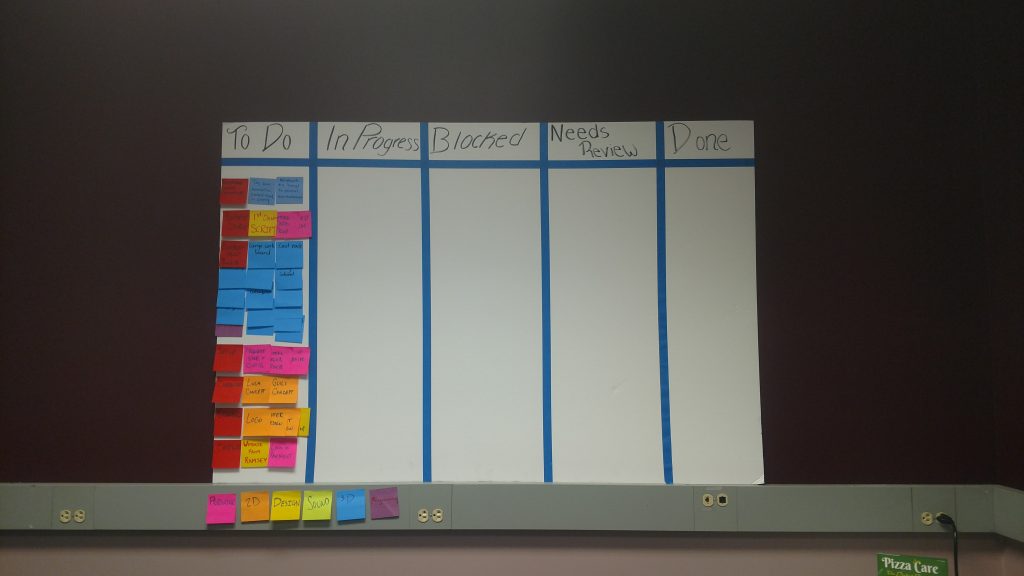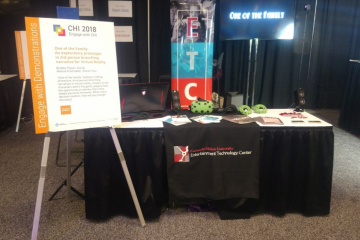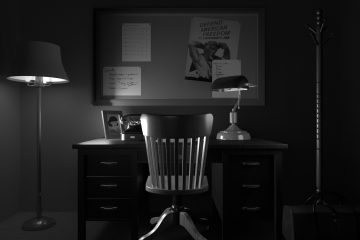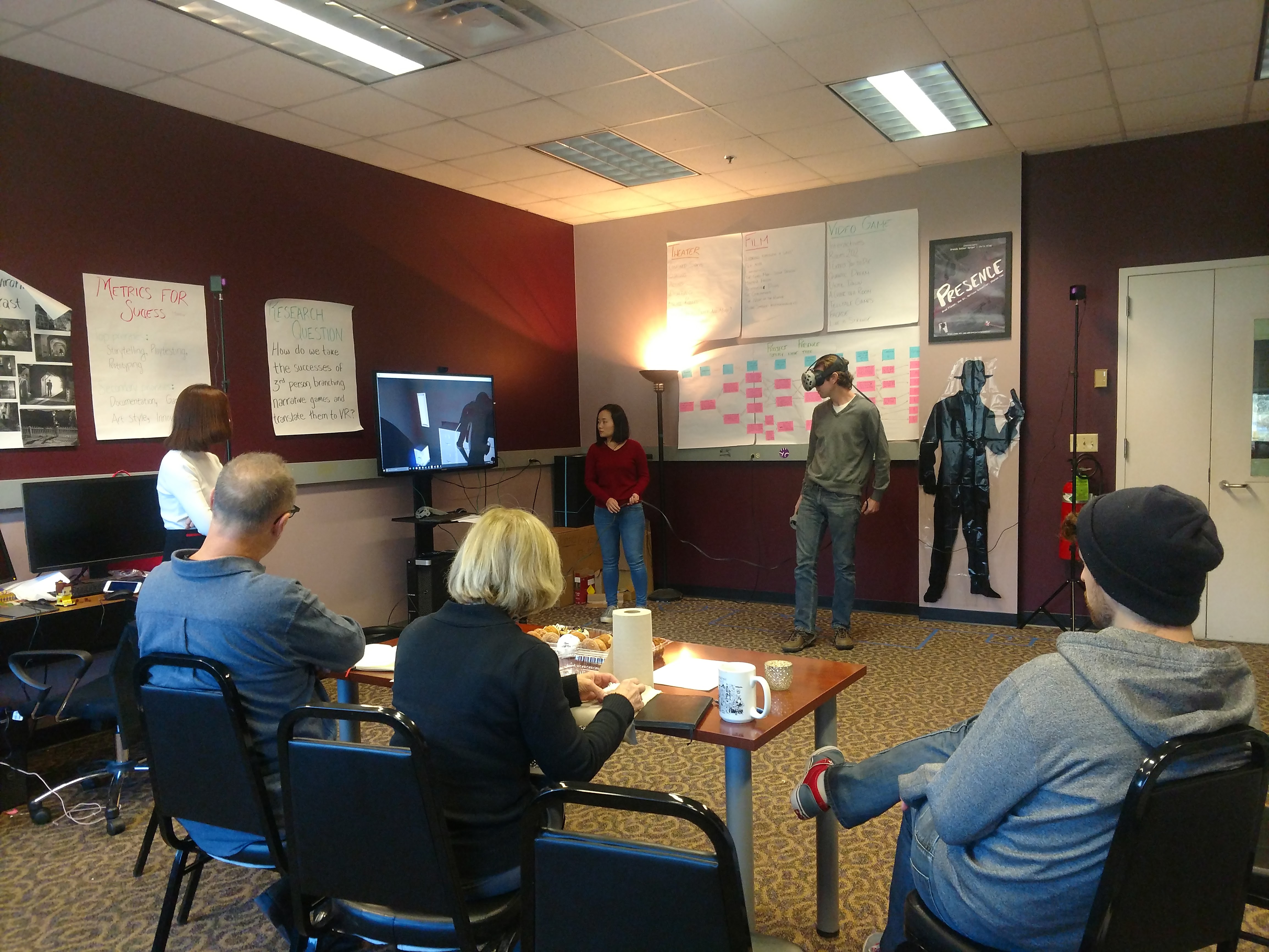Welcome to the long and winding journey that is Presence! We are an ETC student-pitched project that is spending fall of 2017 exploring the potential of interactive, cinematic gaming in VR.
The Pitch
When we pitched the idea last semester, we did so with the following design principles:
1. The guest will have a defined role to play
2. with clear opportunities to manipulate the narrative, but
3. the guest will be removed from the action.
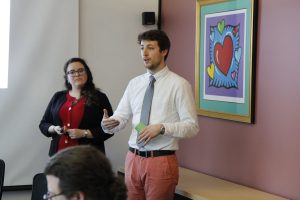
Brad, narrative designer, and Melissa, producer, answer faculty questions
Essentially what this means is that the guest is not a character.
This normally would not be an issue for narrative games. Looking at predecessors in the genre like Until Dawn and Heavy Rain, the guest rarely feels as though they themselves are the characters. Instead, they are co-conspirator with the author of the story, pushing characters to go one way or another in order to further the plot.
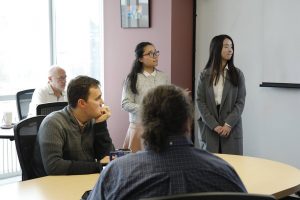
Zoe, programmer, and Sharon, art director, demonstrating our idea
The problem is that in every VR experience any of us have designed, someone inevitably asks, “But who am I?”
So our four-person team is trying to figure out how to create a VR game for this genre that is designed in such a way that the guest does not have an assigned character, but does not mind.
The Summer – Getting Ready
For this design experiment to work, we knew we would need a strong story to build upon, and to create this strong story, we would need to work over the summer. Our team selected a film noir mafia story set in 1940s New York, narrowed the cast to two characters, and created a single setting of the back office of a restaurant. We considered a methods of presenting choices, such as character controls or floating written options, but instead settled on two-state interactive objects the guest can mess with and the character can use.
Armed with these choices, Brad, our narrative designer, then got to work putting together a story map.
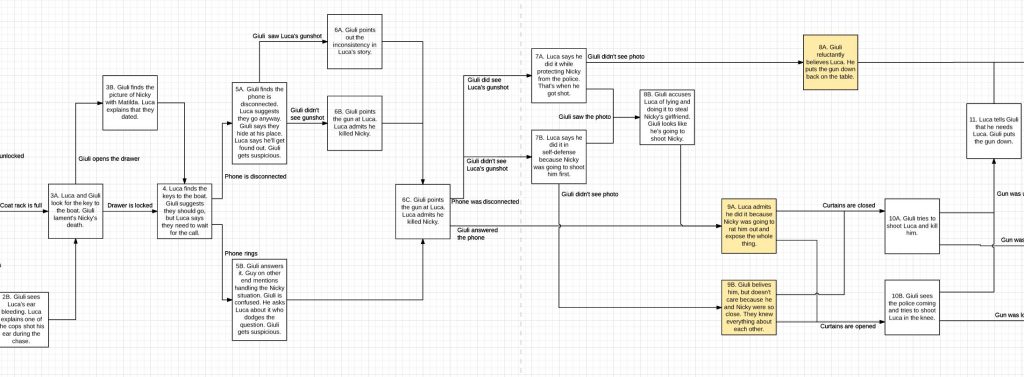
That story map eventually became a choose your own adventure story that we could playtest on friends and co-workers at our various internships around the country. Mainly we looked at two things: 1) Do all paths lead to a good story, and 2) do all choices feel like they make an impact on the narrative?
The short answers were: no and no.
For one thing, we learned that guests are more able to recognize that their influence on physical objects had a narrative impact when the consequences of that influence were physical. For instance, unlocking a drawer in this early draft revealed a photograph, which in turn initiated dialogue that was meant to cause one character to mistrust the other. The photograph had an internal impact on the characters, not an external one, so the guests thought nothing happened.
We also realized that the more balanced the story map, the more balanced each narrative will be. It became much easier to track the rise and fall of the story when each path rises and falls in the same relative place in the timeline.
Armed with this new information, Brad reworked the entire thing.
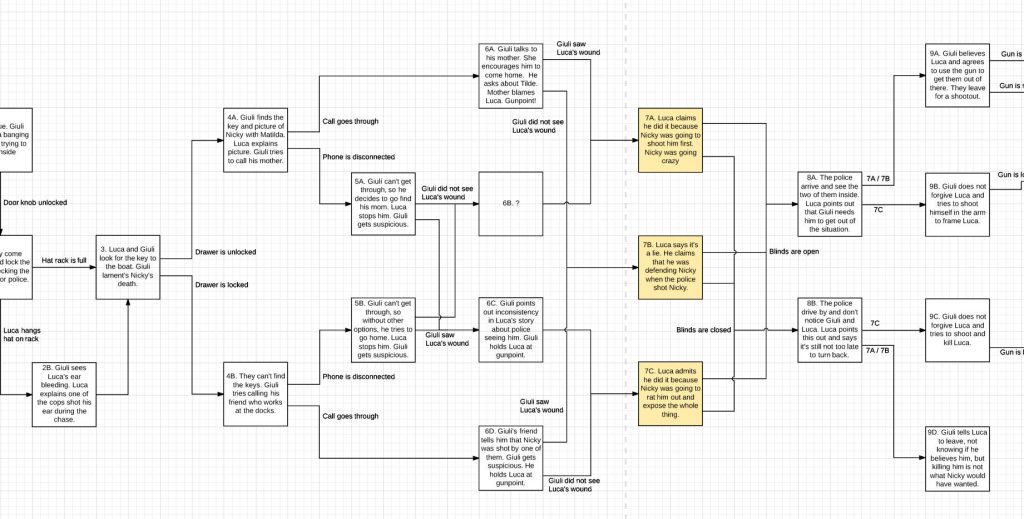
While Brad was working on the story, Melissa, producer and 2D artist, worked with Sharon, our art director and 3D artist, to design the environment. Not only did this give Brad more material to work with when writing the space, but it allowed Sharon to get a head start and building the assets for our virtual stage.
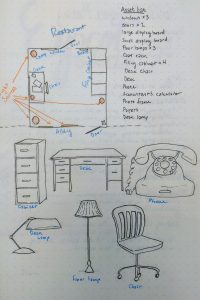 Our story takes place in the 1940s in a manager’s office, so we spent some time researching the objects we wanted in the space. No matter what, we need whomever puts on the headset and steps in our world to immediately get a sense of both where and when they are.
Our story takes place in the 1940s in a manager’s office, so we spent some time researching the objects we wanted in the space. No matter what, we need whomever puts on the headset and steps in our world to immediately get a sense of both where and when they are.
Thankfully, in an office there are some relatively iconic things that will signify time and place. Phones, calculators, and lamps all looked drastically different. We won’t know until we have the whole thing built, but we are relatively confident that we’re designing in the right direction.
Wrapping Up Week One
All of this leads us to where we are now – our first week of the semester!
While much of our time during these first five days has been dedicated simply to settling in, we were able by the end of the week to determine our early prototyping goals:
- Brad will be finishing
- Zoe, our programmer, will be creating a prototype of the branching animation mechanic in unity
- Sharon will be completing our environment models so we can get a real sense of the space
- Melissa will be initiating the casting process for actors and creating our character concept art
It’s exciting to have a direction to follow, and we’re looking forward to where this road will take us!
